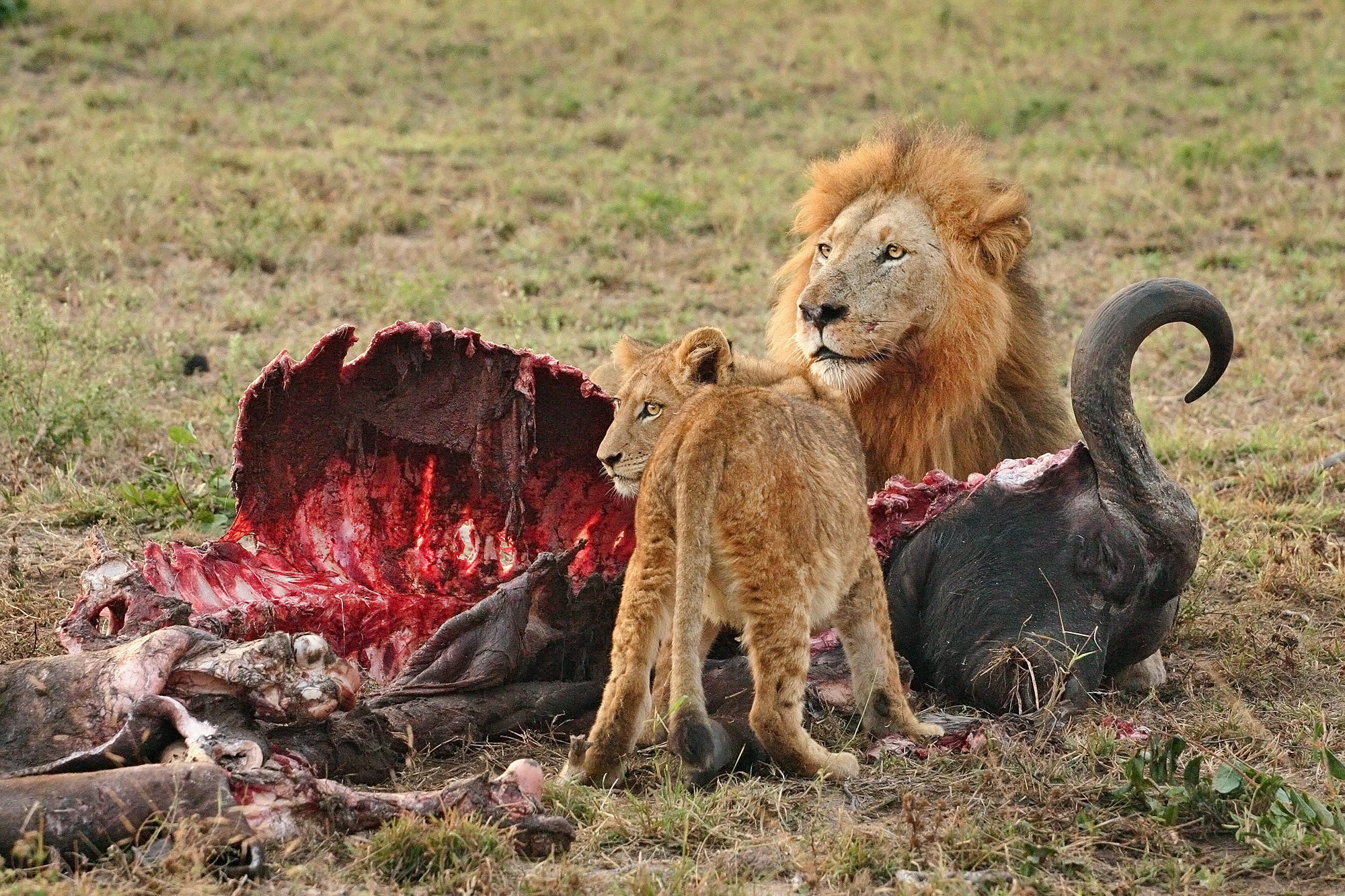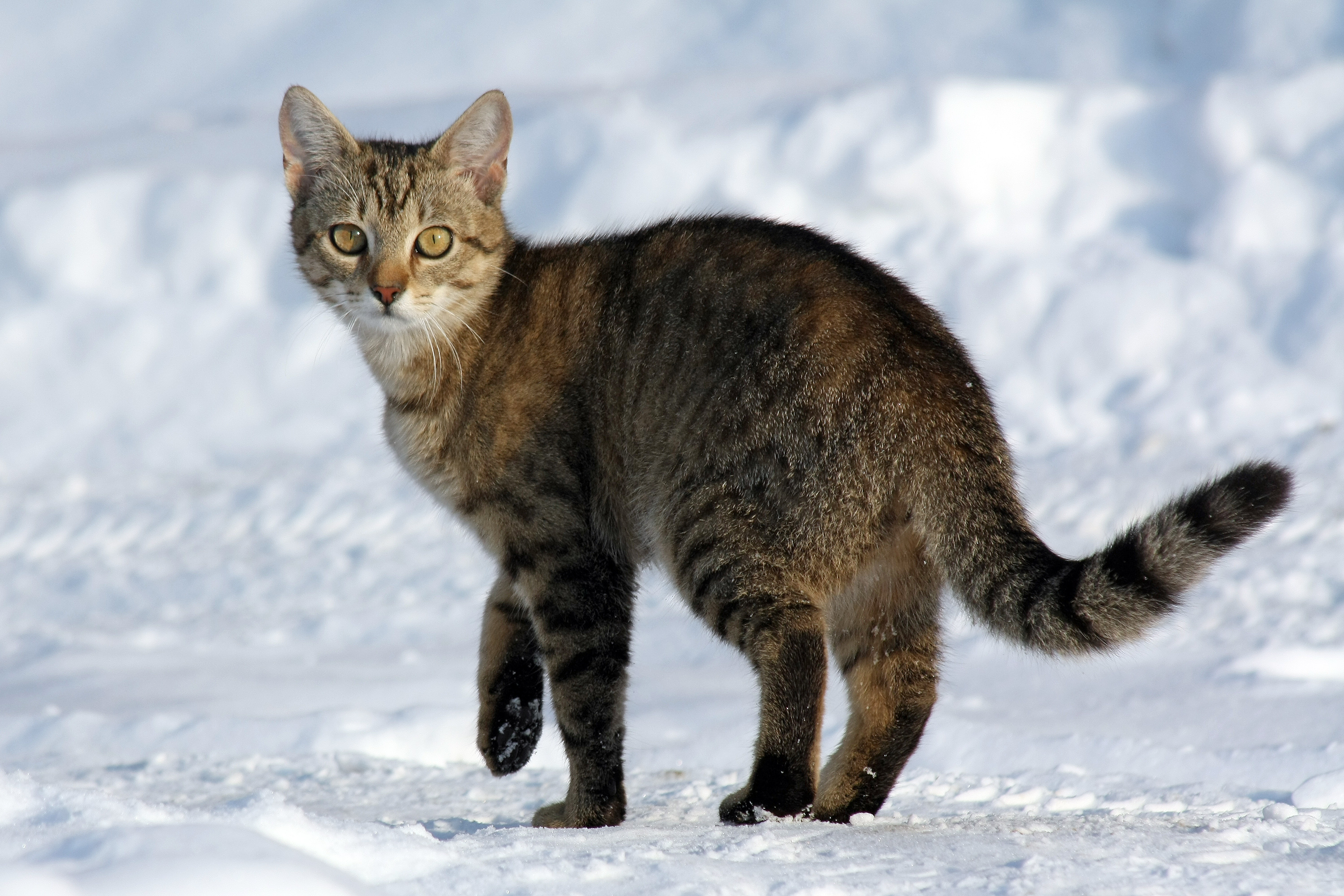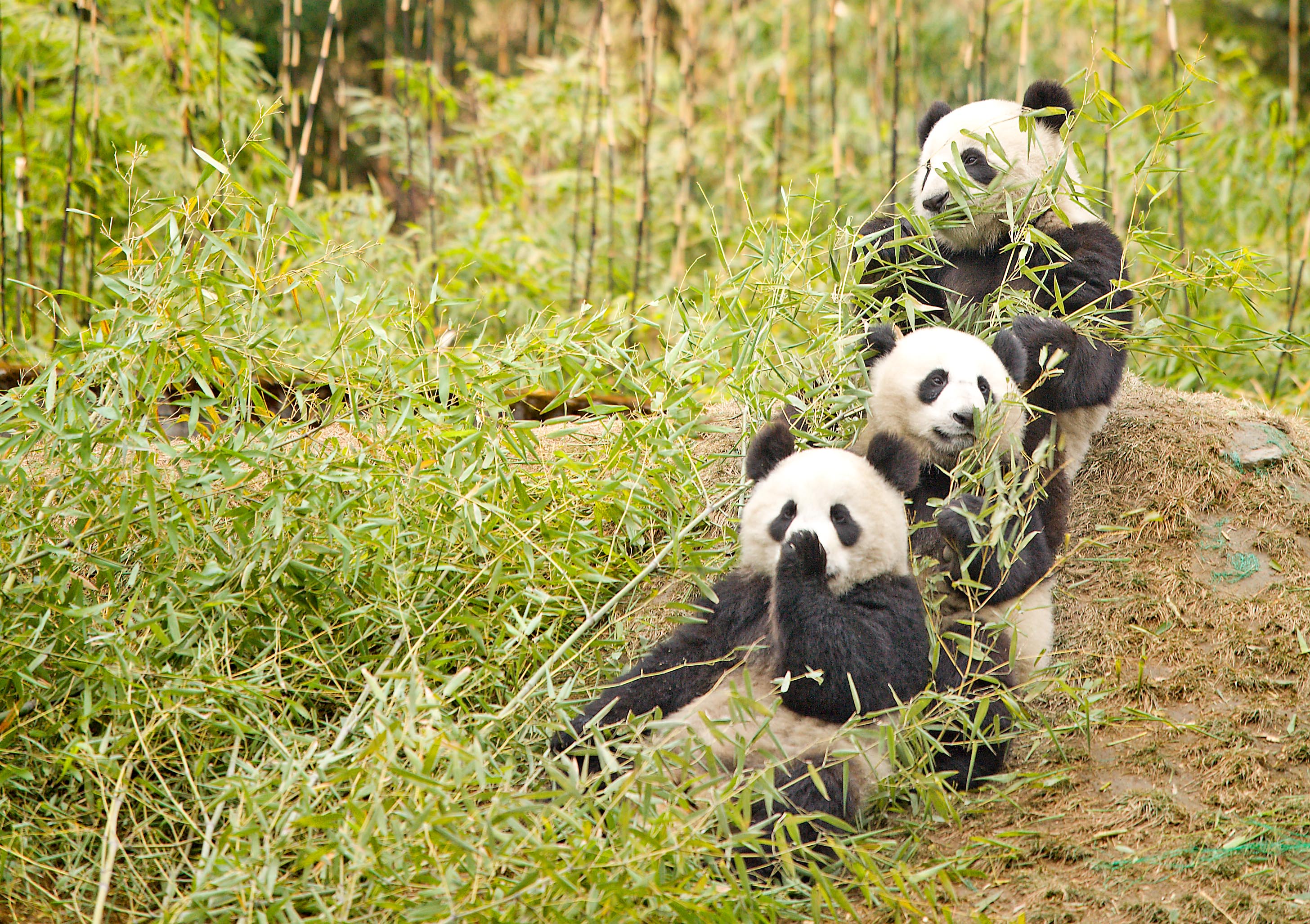|
Carnivore
A carnivore , or meat-eater (Latin, ''caro'', genitive ''carnis'', meaning meat or "flesh" and ''vorare'' meaning "to devour"), is an animal or plant Plants are the eukaryotes that form the Kingdom (biology), kingdom Plantae; they are predominantly Photosynthesis, photosynthetic. This means that they obtain their energy from sunlight, using chloroplasts derived from endosymbiosis with c ... whose nutrition and energy requirements are met by eating, consumption of animal tissue (biology), tissues (mainly muscle, adipose tissue, fat and other soft tissues) as food, whether through predation or scavenger, scavenging. Nomenclature Mammal order The technical term for mammals in the order (biology), order Carnivora is ''carnivoran'', and they are so-named because most member species in the group have a carnivorous diet, but the similarity of the name of the order and the name of the diet causes confusion. Many but not all carnivorans are meat eaters; a few, such as the fe ... [...More Info...] [...Related Items...] OR: [Wikipedia] [Google] [Baidu] |
Mesocarnivore
A mesocarnivore is an animal whose diet consists of 30–70% meat with the balance consisting of non-vertebrate foods which may include insects, fungi, fruits, other plant material and any food that is available to them. Mesocarnivores are from a large family group of mammalian carnivores and vary from small to medium sized, which are often less than fifteen kilograms, the human is a notable exception.Gary W. Roemer, Matthew E. Gompper, Blaire Van Valkenburgh, "The Ecological Role of the Mammalian Mesocarnivore", ''BioScience'', Volume 59, Issue 2, February 2009, Pages 165–173, https://doi.org/10.1525/bio.2009.59.2.9 Mesocarnivores are seen today among the Canidae (coyotes, foxes), Viverridae (civets), Mustelidae (martens, tayra), Procyonidae (ringtail, raccoon), Mephitidae (skunks), and Herpestidae (some mongooses). The red fox is also the most common of the mesocarnivores in Europe and has a high population density in the areas they reside. In North America, some mesocarnivo ... [...More Info...] [...Related Items...] OR: [Wikipedia] [Google] [Baidu] |
Hypercarnivore
A hypercarnivore is an animal that has a diet that is more than 70% meat, either via active predation or by scavenging. The remaining non-meat diet may consist of non-animal foods such as fungi, fruits or other plant material. Some extant examples of hypercarnivorous animals include crocodilians, owls, shrikes, eagles, vultures, felids, most wild canids, polar bear, odontocetid cetaceans (toothed whales), snakes, spiders, scorpions, mantises, marlins, groupers, piranhas and most sharks. Every species in the family Felidae, including the domesticated cat, is a hypercarnivore in its natural state. Additionally, this term is also used in paleobiology to describe taxa of animals which have an increased slicing component of their dentition relative to the grinding component. In domestic settings, e.g. cats may have a diet derived from only plant and synthetic sources using modern processing methods. Feeding farmed animals such as alligators and crocodiles mostly or fully plan ... [...More Info...] [...Related Items...] OR: [Wikipedia] [Google] [Baidu] |
Predation
Predation is a biological interaction in which one organism, the predator, kills and eats another organism, its prey. It is one of a family of common List of feeding behaviours, feeding behaviours that includes parasitism and micropredation (which usually do not kill the Host (biology), host) and parasitoidism (which always does, eventually). It is distinct from Scavenger, scavenging on dead prey, though many predators also scavenge; it overlaps with Herbivore, herbivory, as Seed predation, seed predators and destructive frugivores are predators. Predation behavior varies significantly depending on the organism. Many predators, especially carnivores, have evolved distinct hunting strategy, hunting strategies. Pursuit predation involves the active search for and pursuit of prey, whilst ambush predation, ambush predators instead wait for prey to present an opportunity for capture, and often use stealth or aggressive mimicry. Other predators are opportunism, opportunistic or om ... [...More Info...] [...Related Items...] OR: [Wikipedia] [Google] [Baidu] |
Omnivores
An omnivore () is an animal that regularly consumes significant quantities of both plant and animal matter. Obtaining energy and nutrients from plant and animal matter, omnivores digest carbohydrates, protein, fat, and fiber, and metabolize the nutrients and energy of the sources absorbed. Often, they have the ability to incorporate food sources such as algae, fungi, and bacteria into their diet. Omnivores come from diverse backgrounds that often independently evolved sophisticated consumption capabilities. For instance, dogs evolved from primarily carnivorous organisms (Carnivora) while pigs evolved from primarily herbivorous organisms (Artiodactyla). Despite this, physical characteristics such as tooth morphology may be reliable indicators of diet in mammals, with such morphological adaptation having been observed in bears. The variety of different animals that are classified as omnivores can be placed into further sub-categories depending on their feeding behaviors. Frug ... [...More Info...] [...Related Items...] OR: [Wikipedia] [Google] [Baidu] |
Ursidae
Bears are carnivoran mammals of the family (biology), family Ursidae (). They are classified as caniforms, or doglike carnivorans. Although only eight species of bears are extant, they are widespread, appearing in a wide variety of habitats throughout most of the Northern Hemisphere and partially in the Southern Hemisphere. Bears are found on the continents of North America, South America, and Eurasia. Common characteristics of modern bears include large bodies with stocky legs, long snouts, small rounded ears, shaggy hair, plantigrade paws with five nonretractile claws, and short tails. While the polar bear is mostly carnivorous, and the giant panda is mostly herbivorous, the remaining six species are omnivorous with varying diets. With the exception of courtship display, courting individuals and mothers with their young, bears are typically solitary animals. They may be diurnality, diurnal or nocturnal and have an excellent sense of smell. Despite their heavy build and awk ... [...More Info...] [...Related Items...] OR: [Wikipedia] [Google] [Baidu] |
Carnivora
Carnivora ( ) is an order of placental mammals specialized primarily in eating flesh, whose members are formally referred to as carnivorans. The order Carnivora is the sixth largest order of mammals, comprising at least 279 species. Carnivorans are found on every major landmass and in a variety of habitats, ranging from the cold polar regions of Earth to the hyper-arid region of the Sahara Desert and the open seas. Carnivorans exhibit a wide array of body plans, varying greatly in size and shape. Carnivora are divided into two suborders, the Feliformia, containing the true felids and several animals; and the Caniformia, containing the true canids and many animals. The feliforms include the Felidae, Viverridae, hyena, and mongoose families, the majority of which live only in the Old World; cats are the only exception, occurring in the Old World and the New World, entering the Americas via the Bering land bridge. The caniforms include the Caninae, Procyonidae, bears, ... [...More Info...] [...Related Items...] OR: [Wikipedia] [Google] [Baidu] |
Giant Panda
The giant panda (''Ailuropoda melanoleuca''), also known as the panda bear or simply panda, is a bear species endemic to China. It is characterised by its white animal coat, coat with black patches around the eyes, ears, legs and shoulders. Its body is rotund; adult individuals weigh and are typically long. It is sexually dimorphic, with males being typically 10 to 20% larger than females. A thumb is visible on its forepaw, which helps in holding bamboo in place for feeding. It has large molar teeth and expanded temporal fossa to meet its dietary requirements. It can digest starch and is mostly herbivorous with a diet consisting almost entirely of bamboo and bamboo shoots. The giant panda lives exclusively in six montane regions in a few Chinese provinces at elevations of up to . It is solitary and gathers only in mating seasons. It relies on olfactory communication to communicate and uses scent marks as chemical cues and on landmarks like rocks or trees. Females rear c ... [...More Info...] [...Related Items...] OR: [Wikipedia] [Google] [Baidu] |
Food
Food is any substance consumed by an organism for Nutrient, nutritional support. Food is usually of plant, animal, or Fungus, fungal origin and contains essential nutrients such as carbohydrates, fats, protein (nutrient), proteins, vitamins, or Mineral (nutrient), minerals. The substance is Ingestion, ingested by an organism and assimilated by the organism's Cell (biology), cells to provide energy, maintain life, or stimulate growth. Different species of animals have different List of feeding behaviours, feeding behaviours that satisfy the needs of their metabolisms and have evolved to fill a specific ecological niche within specific geographical contexts. Omnivore, Omnivorous humans are highly adaptable and have adapted to obtaining food in many different ecosystems. Humans generally use cooking to prepare food for consumption. The majority of the food energy required is supplied by the industrial food industry, which produces food through Intensive farming, intensive agricu ... [...More Info...] [...Related Items...] OR: [Wikipedia] [Google] [Baidu] |
Scavenger
Scavengers are animals that consume Corpse decomposition, dead organisms that have died from causes other than predation or have been killed by other predators. While scavenging generally refers to carnivores feeding on carrion, it is also a herbivorous feeding behavior. Scavengers play an important role in the ecosystem by consuming dead animal and plant material. Decomposer, ''Decomposers'' and detritivores complete this process, by consuming the remains left by scavengers. Scavengers aid in overcoming fluctuations of food resources in the environment. The process and rate of scavenging is affected by both Biotic component, biotic and Abiotic component, abiotic factors, such as carcass size, habitat, temperature, and seasons. Etymology Scavenger is an alteration of ''scavager,'' from Middle English ''skawager'' meaning "customs collector", from ''skawage'' meaning "customs", from Old North French ''escauwage'' meaning "inspection", from ''schauwer'' meaning "to inspect", of ... [...More Info...] [...Related Items...] OR: [Wikipedia] [Google] [Baidu] |
Apex Predator
An apex predator, also known as a top predator or superpredator, is a predator at the top of a food chain, without natural predators of its own. Apex predators are usually defined in terms of trophic dynamics, meaning that they occupy the highest trophic levels. Food chains are often far shorter on land, usually limited to being secondary consumers – for example, Gray wolf, wolves prey mostly upon large herbivores (primary consumers), which eat plants (primary producers). The apex predator concept is applied in wildlife management, conservation biology, conservation, and ecotourism. Apex predators have a long evolutionary history, dating at least to the Cambrian period when animals such as ''Anomalocaris'' and ''Timorebestia'' dominated the seas. Humans have for many centuries interacted with other apex predators including the wolf, Bird of prey, birds of prey, and cormorants to hunt game animals, birds, and fish respectively. More recently, humans have started interacting ... [...More Info...] [...Related Items...] OR: [Wikipedia] [Google] [Baidu] |
Polar Bear
The polar bear (''Ursus maritimus'') is a large bear native to the Arctic and nearby areas. It is closely related to the brown bear, and the two species can Hybrid (biology), interbreed. The polar bear is the largest extant species of bear and land carnivore, with adult males weighing . The species is sexually dimorphic, as adult females are much smaller. The polar bear is white- or yellowish-furred with black skin and a thick layer of fat. It is more slender than the brown bear, with a narrower skull, longer neck and lower shoulder hump. Its teeth are sharper and more adapted to cutting meat. The paws are large and allow the bear to walk on ice and paddle in the water. Polar bears are both terrestrial and Pagophily, pagophilic (ice-living) and are considered marine mammals because of their dependence on marine ecosystems. They prefer the annual sea ice but live on land when the ice melts in the summer. They are mostly carnivorous and specialized for preying on pinniped, se ... [...More Info...] [...Related Items...] OR: [Wikipedia] [Google] [Baidu] |









